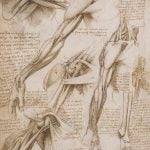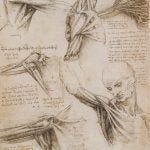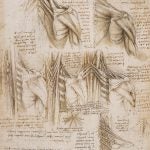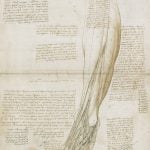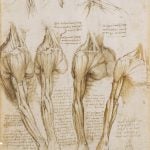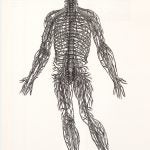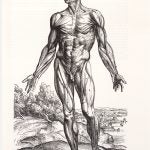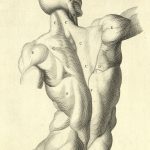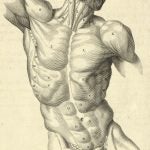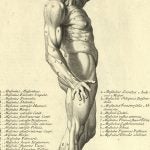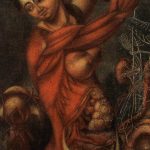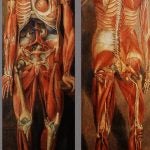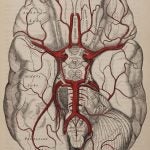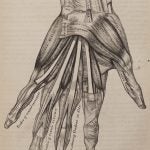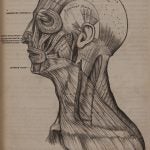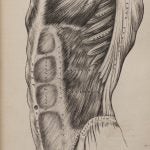“Aesthetics of Anatomy” Art Display, 2nd Floor Laupus Library
This display is comprised of a selection of anatomical illustrations found in books held by Laupus Library. The examples range in age from the Renaissance through the 19th Century. Originally created for scientific study, the aesthetics of these works have taken on a life of their own and the images can be found in digital and print media throughout the world. The health sciences community on campus contributes to a rich heritage of medical history. A goal of the library is to assure that the students and professionals within our community have access to this history through its collection of books and historical artifacts.
The galleries below show thumbnails of all the sketches featured in this display. To view the artwork in person, click on the catalog link provided.
Illustrations by Leonardo da Vinci (1452-1519)
Found in: Leonardo da Vinci: The Mechanics of Man
Leonardo Da Vinci, born in 1452, was an Italian artist, scientist, and architect. Da Vinci is known for his medical contribution in the form of the “Anatomical Manuscript A” which is a collection of drawings depicting the human body and its dissection.
- Pg. 131
- Pg. 61
- Pg. 143
- Pg. 155
- Pg. 95
Illustrations by Andreas Vesalius (1514-1564)
Found in: The Illustrations from the Works of Andreas Vesalius of Brussels
Andreas Vesalius wrote and illustrated the first comprehensive textbook on anatomy. He was born in modern-day Belgium and received his Doctorate in Medicine in 1537, in Padula, Italy.
- Pg. 87
- Pg. 95
- Pg. 147
- Pg. 89
- Pg. 97
Illustrations by Bernardino Genga (1620-1690)
Found in: Anatomy Improved and Illustrated
- Table XII
- Table X
- Table XXII
- Table XVIII
Illustrations by Jacques Fabien Gautier D’Agoty (1716-1786)
Found in: The Physician’s Art: Representations of Art and Medicine
Jaques Fabien Gautier D’Agoty is an 18th century French artist and anatomist. He had many publications in medical journals in Britain and had started his own scientific journal in France called Observations sur l’histoire naturelle.
- Half body, pg. 33
- Spine, pg. 33
- Head, pg. 33
- Full body, pg. 33
Illustrations by H.V. Carter, M.D. (1831-1897)
Found in: Gray’s Anatomy Descriptive and Surgical
Henry Vandyke (H.V.) Carter started taking medical classes at 17 years old in London, and in 1853 he began to study human and comparative anatomy. He is most known for his illustrations published alongside Henry Gray’s research in Gray’s Anatomy.
- Pg. 337
- Pg. 262
- Pg. 189
- Pg. 231

